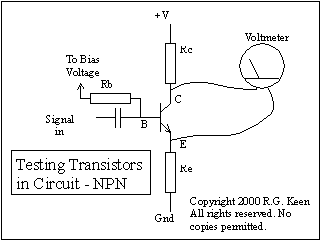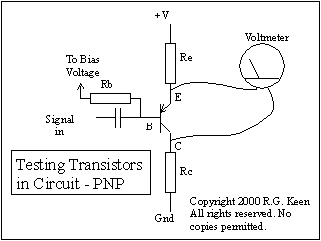 |
For an ordinary NPN type, the collector will
be at a higher voltage than the emitter, perhaps through some collector
resistance, Rc. The emitter may have some Re to the most negative
supply. It's almost certain that you won't have both no Rc and no Re, as
there's no way to get signal out of that.
The base will be biased some way; we represent this as a resistor Rb to a bias voltage. Usually Rb is fairly big, 10K to as much as a half meg. It may be two resistors in series from +V to ground; same thing. To test, hook your voltmeter up as shown, positive to collector and negative to emitter. Using a clip lead, connect one end to the base, and momentararily short the base to the emitter - just touch it and let it go. The voltmeter should show a suddenly increased voltage, as you've just turned the transistor off. Now use the same clip lead and attach a 10K resistor to the free end. Momentarily touch the free end of the 10K resistor to the collector. The |
